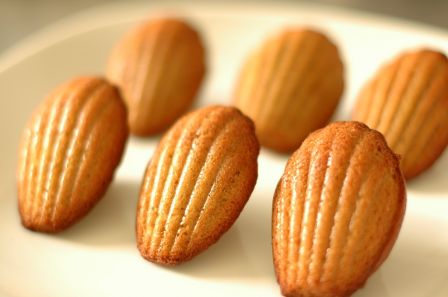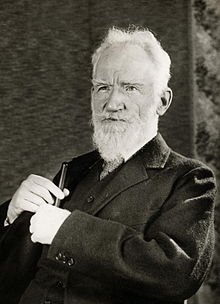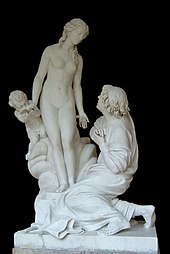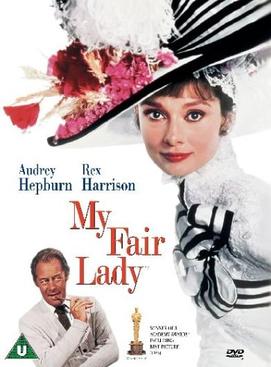The Literature Experience: responding to literature (fantasy)
The Wonderful Wizard of Oz
The Wonderful Wizard of Oz is an American children's novel written by author L. Frank Baum and illustrated by W. W. Denslow, originally published by the George M. Hill Company in Chicago on May 17, 1900. It has since been reprinted on numerous occasions, most often under the title The Wizard of Oz, which is the title of the popular 1902 Broadway musical as well as the iconic 1939 musical film adaptation.
The story chronicles the adventures of a young farm girl named Dorothy in the magical Land of Oz, after she and her pet dog Toto are swept away from their Kansas home by a cyclone. The novel is one of the best-known stories in American literature and has been widely translated. The Library of Congress has declared it "America's greatest and best-loved homegrown fairytale." Its groundbreaking success and the success of the Broadway musical adapted from the novel led Baum to write thirteen additional Oz books that serve as official sequels to the first story.


The Wicked Witch melts

Dorothy meets the Cowardly Lion
The Wonderful Wizard of Oz is a book about friendship
→ Dorothy 為了抓回Toto 失去回家的機會兩次
Naming of Oz:
A very popular myth about the origin of the name "Oz" is that it was inspired by the labels on the author's filing cabinet: A-N, O-Z.
L. Frank Baum used to hold "story hour" for all the neighborhood children; they would come to his home and gather in his study, where Baum would make up fantastic stories off the top of his head. One day he began a story about some characters who travel to an imaginary world to meet a great wizard; a little voice piped up wanting to know the name of the land. Baum looked around his study and his eyes rested on a file cabinet with two labels: A-N and O-Z; thus he created the land of "OZ".

West→ dead end→ Wicked Witch of the West is evil
水→ 淨化、洗滌髒汙→ kill Wicked Witch of the West
Shirley Temple:
Shirley Temple Black was an American film and television actress, singer, dancer, and public servant, most famous as Hollywood's number-one box-office star from 1935 through 1938. As an adult, she entered politics and became a diplomat, serving as United States Ambassador to Ghana and later to Czechoslovakia, and as Chief of Protocol of the United States.
Temple began her film career in 1932 at the age of three. In 1934, she found international fame in Bright Eyes, a feature film designed specifically for her talents. She received a special Juvenile Academy Award in February 1935 for her outstanding contribution as a juvenile performer to motion pictures during 1934, and film hits such as Curly Top and Heidi followed year after year during the mid-to-late 1930s.

Shirley Temple
It is believed thatShirley Temple was the model of Mentholatum.
Mentholatum:
The Mentholatum Company, Inc., founded in 1889 by Albert Alexander Hyde, is an American maker of non-prescription health care products. It was bought out by Rohto Pharmaceutical Co., a Japanese health care company, in 1988. The Mentholatum Company is widely associated with its top three products, the Mentholatum Ointment, Mentholatum Deep Heating Rub, and Mentholatum Lip Care.

Shirley Temple at her childhood
Shirley Temple (beverage):
A Shirley Temple is a non-alcoholic mixed drink traditionally made with ginger ale, a splash of grenadine and garnished with a maraschino cherry. Modern Shirley Temple recipes may substitute lemon-lime soda or lemonade and sometimes orange juice in part, or in whole.
The cocktail may have been invented by a bartender at Chasen's, a restaurant in Beverly Hills, California, to serve then child actress Shirley Temple. However, other claims to its origin have been made.
Temple herself was not a fan of the drink, as she told Scott Simon in an NPR interview in 1986: "The saccharine sweet, icky drink? Yes, well...those were created in the probably middle 1930s by The Brown Derby Restaurant in Hollywood and I had nothing to do with it. But, all over the world, I am served that. People think it's funny. I hate them. Too sweet!"

secular 世俗的
Not spiritual or relating to the physical world and not the spiritual world.
vulgar 粗俗的 ; 庶民的
Not having or showing good manners, good taste, or politeness; relating to the common people or the speech of common people.
religious 宗教的 ; 認真的 ; 嚴謹的
Relating to religion; very careful to do something whenever it can or should be done.
In Search of Lost Time (Remembrance of Things Past) 追憶逝水年華
In Search of Lost Time —also translated as Remembrance of Things Past—is a novel in seven volumes by Marcel Proust (1871–1922). His most prominent work, it is known both for its length and its theme of involuntary memory, the most famous example being the "episode of the madeleine" which occurs early in the first volume.
Marcel Proust:
Valentin Louis Georges Eugène Marcel Prous was a French novelist, critic, and essayist best known for his monumental novel À la recherche du temps perdu (In Search of Lost Time; earlier translated as Remembrance of Things Past), published in seven parts between 1913 and 1927. He is considered by many to be one of the greatest authors of all time.

Marcel Prous
Involuntary memory:
Involuntary memory, also known as involuntary explicit memory, involuntary conscious memory, involuntary aware memory, and most commonly, involuntary autobiographical memory, is a subcomponent of memory that occurs when cues encountered in everyday life evoke recollections of the past without conscious effort. Voluntary memory, its binary opposite, is characterized by a deliberate effort to recall the past.

Tea biscuit dunking is one of many examples of cues that can elicit involuntary memories, as evidenced by Marcel Proust.
Madeleine (cake):
The madeleine or petite madeleine is a traditional small cake from Commercy and Liverdun, two communes of the Lorraine region in northeastern France.
In In Search of Lost Time (Remembrance of Things Past), author Marcel Proust uses madeleines to contrast involuntary memory with voluntary memory. The latter designates memories retrieved by "intelligence," that is, memories produced by putting conscious effort into remembering events, people, and places. Proust's narrator laments that such memories are inevitably partial, and do not bear the "essence" of the past. The most famous instance of involuntary memory by Proust is known as the "episode of the madeleine," yet there are at least half a dozen other examples in In Search of Lost Time.

madeleine
George Bernard Shaw:
George Bernard Shaw was a Nobel Prize and Oscar-winning Irish playwright, critic and socialist whose influence on Western theatre, culture and politics stretched from the 1880s to his death in 1950. Originally earning his way as an influential London music and theatre critic, Shaw's greatest gift was for the modern drama. Strongly influenced by Henrik Ibsen, he successfully introduced a new realism into English-language drama. He wrote more than 60 plays, among them Man and Superman, Mrs. Warren's Profession, Major Barbara, Saint Joan, Caesar and Cleopatra, and Pygmalion. With his range from biting contemporary satire to historical allegory, Shaw became the leading comedy dramatist of his generation and one of the most important playwrights in the English language since the 17th century.
He is the only person to have been awarded both a Nobel Prize (Literature, 1925) and an Academy Award (Best Adapted Screenplay, 1938), the first for his contributions to literature and the second for his film adaptation of his most popular play, Pygmalion. The story of a pedantic British linguist who turns a Cockney flower girl into a lady was immortalised after his death in the 1953 Broadway musical My Fair Lady.

George Bernard Shaw
Pygmalion (play) 賣花女
Pygmalion is a play by George Bernard Shaw, named after a Greek mythological character. It was first presented on stage to the public in 1913.
Professor of phonetics Henry Higgins makes a bet that he can train a bedraggled Cockney flower girl, Eliza Doolittle, to pass for a duchess at an ambassador's garden party by teaching her to assume a veneer of gentility, the most important element of which, he believes, is impeccable speech. The play is a sharp lampoon of the rigid British class system of the day and a commentary on women's independence.

Pygmalion (mythology):
Pygmalion is a legendary figure of Cyprus. Though Pygmalion is the Greek version of the Phoenician royal name Pumayyaton,he is most familiar from Ovid's narrative poem Metamorphoses.
Pygmalion is a Cypriot sculptor who fell in love with a statue he had carved and named her Galatea. In time, Aphrodite's festival day came, and Pygmalion made offerings at the altar of Aphrodite. There—too scared to admit his desire—he quietly wished for a bride who would be "the living likeness of my ivory girl". When he returned home, he kissed his ivory statue, and found that its lips felt warm. He kissed it again, touched its breasts with his hand, and found that the ivory had lost its hardness. Aphrodite had granted Pygmalion's wish.


Pygmalion and Galatea
My Fair Lady:
My Fair Lady is a musical based on George Bernard Shaw's Pygmalion, with book and lyrics by Alan Jay Lerner and music by Frederick Loewe. The story concerns Eliza Doolittle, a Cockney flower girl who takes speech lessons from professor Henry Higgins, a phoneticist, so that she may pass as a lady. The original Broadway, London and film versions all starred Rex Harrison.

Movie of My Fair Lady

Eliza Doolittle (Audrey Hepburn) and Henry Higgins (Rex Harrison)
Cairn Terrier:
The Cairn Terrier is one of the oldest of the terrier breeds, originating in the Scottish Highlands and recognized as one of Scotland's earliest working dogs. The breed was given the name cairn, because the breed's function was to hunt and chase quarry between the cairns in the Scottish highlands.

Bicentennial Man (film):
Bicentennial Man is a 1999 American science fiction comedy-drama film starring Robin Williams, Sam Neill, Embeth Davidtz (in a dual role), Wendy Crewson, and Oliver Platt. Based on the novel The Positronic Man, co-written by Isaac Asimov and Robert Silverberg, which is itself based on Asimov's original novella titled The Bicentennial Man, the plot explores issues of humanity, slavery, prejudice, maturity, intellectual freedom, conformity, sex, love, and mortality. The film, a co-production between Touchstone Pictures and Columbia Pictures, was directed by Chris Columbus. The title comes from the main character existing to the age of two hundred years, and Asimov's novella was published in the year that the U.S. had its bicentennial.

ter-: 土地
For example: extra-terrestrial 外星人; terrain 地形; territory; terrace 梯田
Meet Me in St. Louis:
Meet Me in St. Louis is a 1944 musical film from Metro-Goldwyn-Mayer which tells the story of an American family living in St. Louis at the time of the Louisiana Purchase Exposition World's Fair in 1904. The picture stars Judy Garland, Margaret O'Brien, Mary Astor, Lucille Bremer, Tom Drake, Leon Ames, Marjorie Main, June Lockhart, and Joan Carroll.
The movie was adapted by Irving Brecher and Fred F. Finklehoffe from a series of short stories by Sally Benson, originally published in The New Yorker magazine under the title "5135 Kensington", and later in novel form as Meet Me in St. Louis. The film was directed by Vincente Minnelli, who met Garland on the set and later married her. It was the second-highest grossing picture of the year, only behind Going My Way.
Garland debuted the standards "The Trolley Song", "The Boy Next Door", and "Have Yourself a Merry Little Christmas", all of which became hits after the film was released. Arthur Freed, the producer of the film, also wrote and performed one of the songs.


Margaret O'Brien and Judy Garland in Meet Me in St. Louis
simile 明喻
A simile is a figure of speech that directly compares two things through the explicit use of connecting words (such as like, as, so, than, or various verbs such as resemble). Although similes and metaphors are sometimes considered to be interchangeable, similes acknowledge the imperfections and limitations of the comparative relationship to a greater extent than metaphors. Metaphors are subtler and therefore rhetorically stronger in that metaphors equate two things rather than simply compare them. Similes also safeguard the author against outrageous, incomplete, or unfair comparison. Generally, metaphor is the stronger and more encompassing of the two forms of rhetorical analogies. While similes are mainly used in forms of poetry that compare the inanimate and the living, there are also terms in which similes and personifications are used for humorous purposes and comparison.
metaphor 隱喻
A metaphor is a figure of speech that identifies something as being the same as some unrelated thing for rhetorical effect, thus highlighting the similarities between the two. While a simile compares two items, a metaphor directly equates them, and does not use "like" or "as" as does a simile. One of the most commonly cited examples of a metaphor in English literature is the "All the world's a stage" monologue from As You Like It:
All the world's a stage,
And all the men and women merely players;
They have their exits and their entrances[...]
—William Shakespeare, As You Like It, 2/7
drip 小水滴 drop 大水滴


 留言列表
留言列表